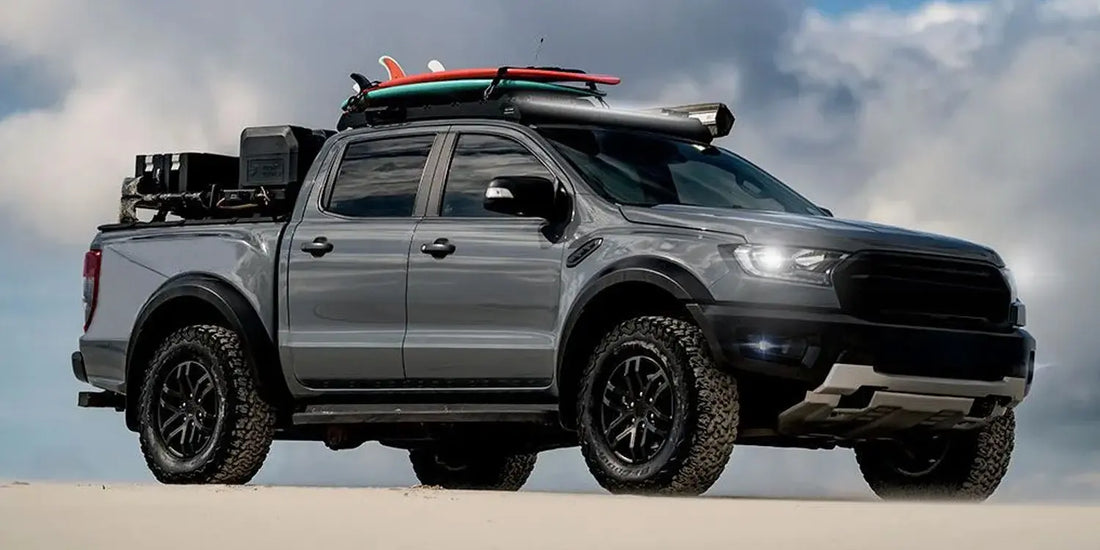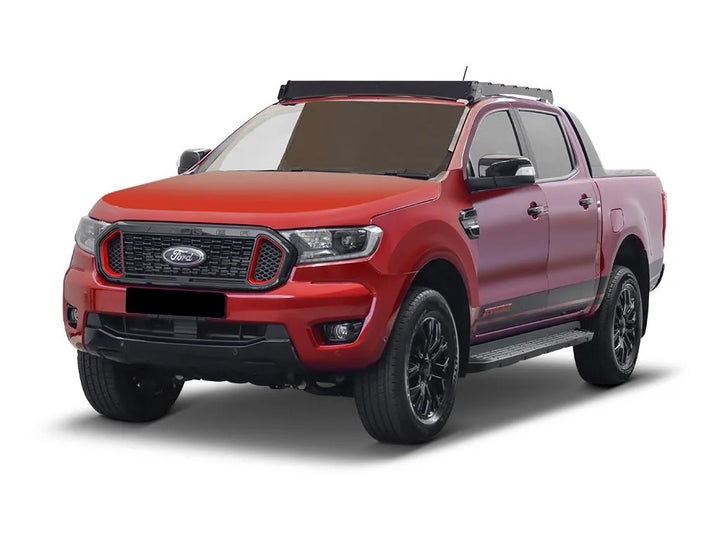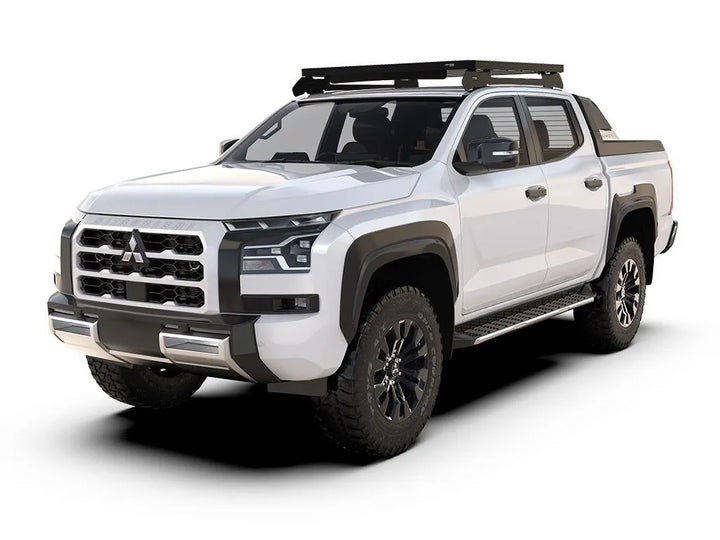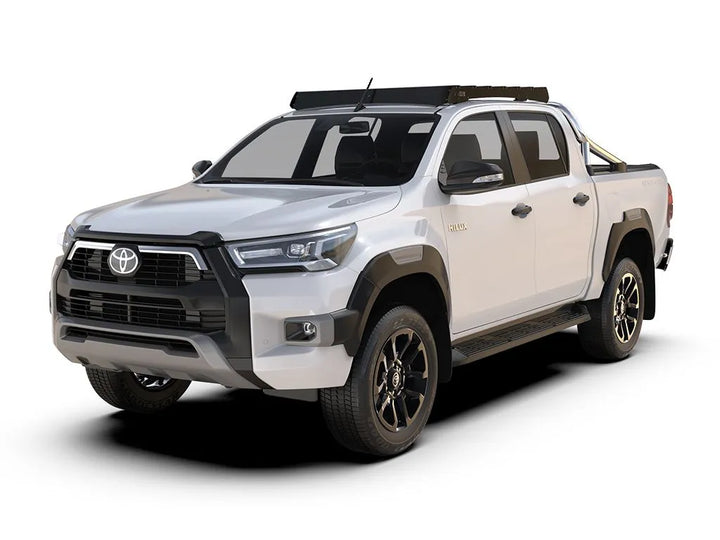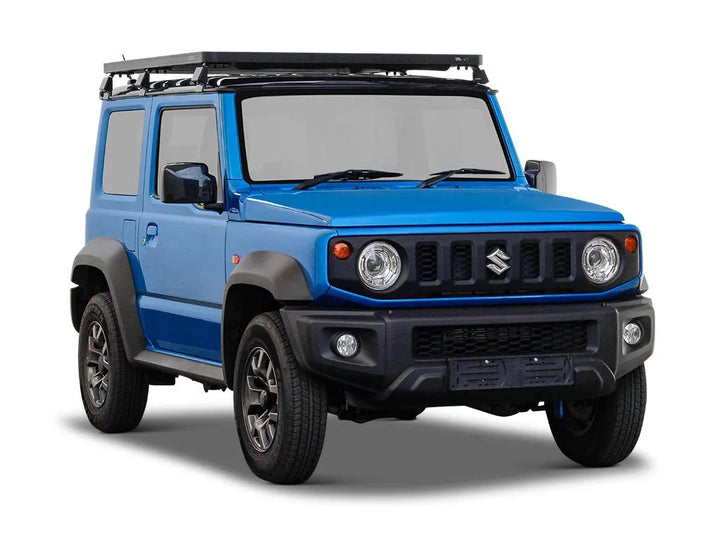Packing for a weekend getaway shouldn’t feel like vehicle Tetris. The right roof racks convert unused roof space into dependable carrying capacity, keep the cabin civil, and make departure-day stress disappear.
This guide is written for everyday Australian drivers who want practical detail without a sales pitch; we’ll reference front runner style kit because it’s common and clever, yet the principles apply to most rack systems.
Start with what you’ll actually carry
Be honest about the loads you move most weeks, not just once a year. If your life is boards, kayaks, or the odd flat-pack, a pair of bars can be easy to install and efficient.
Touring families, photographers, and tradies who travel will appreciate a platform, which provides more surface area, more tie down points, and space for roof top tents without compromising door access.
Drivers of dual-cabs should also consider ute tub racks, which keep mass low over the tub and leave the cab roof free for long ladders or timber.
Ratings that matter (and how to read them)
Every vehicle lists a load rating for the roof, usually the dynamic number - what you can legally carry while driving. The rack has a rating as well. Your safe payload is the lower of those figures, minus the weight of the rack, brackets, awning, and anything bolted to it.
Parked, static capacity is higher, which is why tents work. However, Australian corrugations and crosswinds punish overloaded setups, so aim for a healthy safety margin rather than chasing every last kilogram.
Choose the format: platform, bars, or bed rack
Platform racks are the all-rounders. Modern designs run slatted decks with T-slots, so the racks offer a wide range of mounting positions and accessories without drilling. Load bars are lighter and quieter, perfect for simple, long items; they suit urban driving and still handle weekend duties.
For utes, bed-rack solutions sit over the tub and are brilliant when you want a tent up high and tools down low. Whatever you pick, confirm there’s a model-specific mount kit for your vehicle and that it keeps doors, antennas, and tailgates happy.
Fitment and setup that work in Australia
Spread supports as far apart as your roof allows; the wider stance reduces pitch on long loads and keeps straps from creeping on corrugations. Measure the vehicle’s new overall height once the rack is fitted - many car parks in Australia cap out at 2.1 metres, and some servo canopies sit even lower.
Pack heavy gear low and forward, keep light and bulky equipment up top, and remove wind-catching accessories when you won’t use them; drag and noise fall away, and fuel economy improves.
Strapping: small habits, big dividends
Use rated cam straps or purpose-built elastic straps rather than clothesline rope. Cross the straps so the load can’t slide laterally, add short fore-and-aft ties for boards or timber, and cushion soft goods where the strap contacts hard edges. Ratchets should be firm, not brutal - over-tension can crush cores, deform tent bases, or damage slats.
Salt, corrugations, and simple maintenance
Beach days are wonderful and hard on hardware. After exposure to salt, rinse the rack, channels, and fasteners with fresh water. If you’ve mixed metals, watch for galvanic corrosion and touch up powder coat chips.
After the first few drives, and again after long dirt sections, re-torque the mounting hardware; five minutes with a spanner is cheaper than replacing brackets somewhere remote.
Accessory choices that actually help
Start light. An awning transforms rainy lunch stops and hot camps. Recovery board mounts keep gritty gear outside the cabin and ready for sand. Rugged storage boxes make fast work of camp packing, and quick-release brackets let you unload in seconds. Add lights sparingly and aim them well; every object adds drag. Because many rack systems are modular - Front Runner included - you can grow or slim the setup as your hobbies change.
Roof top tents: quick reality check
Tents are brilliant for touring, but the numbers still rule. The total system mass - tent, platform, brackets, awning - must sit inside the dynamic rating while you drive. At camp, the ladder shares the load, so static capacity is higher, yet you still need to travel there legally and safely. Consider suspension or tyre-pressure adjustments if you’re adding serious weight for a big trip.
Materials, finish, and security
Aluminium dominates for good reasons: it’s light, corrosion-resistant, and plenty strong. Steel has a place in heavy duty builds, but keep an eye on the kilos it adds to the high point of the vehicle. Replace brittle rubber strips, keep bolts anti-seized, and use lockable mounts or a short cable lock in the city.
Pre-purchase checklist
Confirm roof and rack ratings, weigh the rack plus likely accessories, pick the right mount kit, and measure overall height. Think about future accessories so your platform doesn’t box you in. Finally, ask the retailer about products services - fitting, warranty, and spares - because good support matters long after the first drive.
Bottom line:
Choose the format that fits your life, respect the ratings, strap loads properly, and maintain the gear. Do that and your roof racks become a quiet, capable partner on every trip - weekday errands included.

